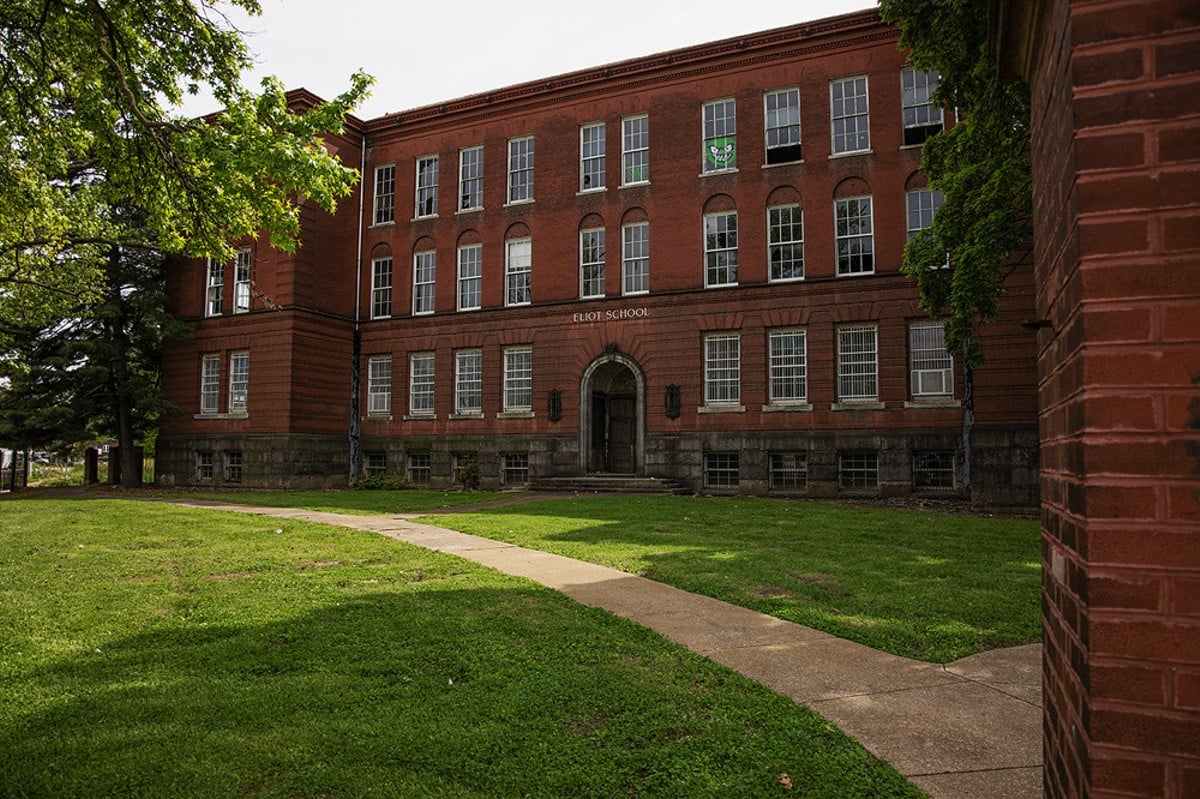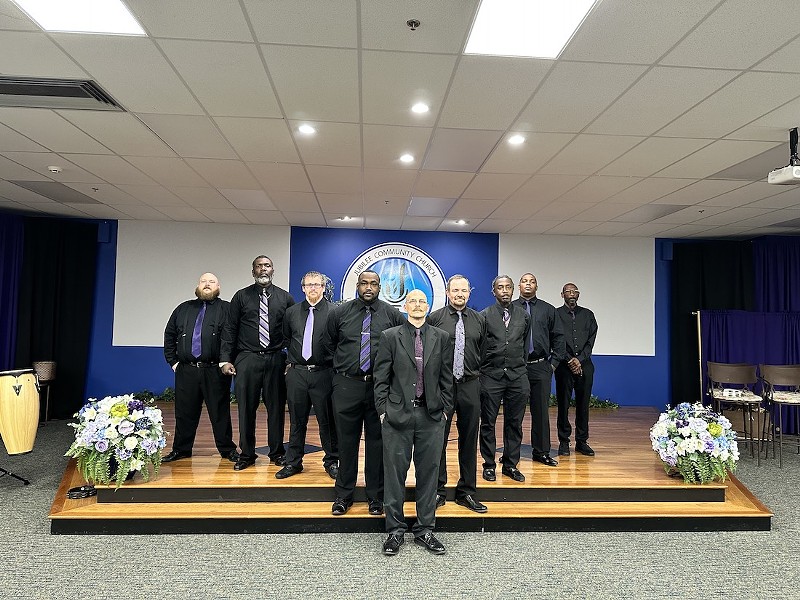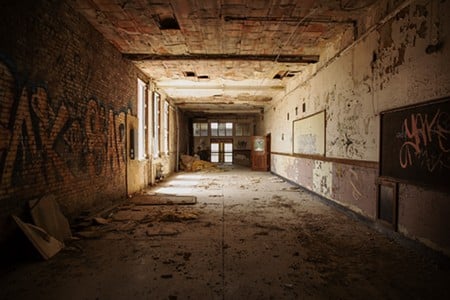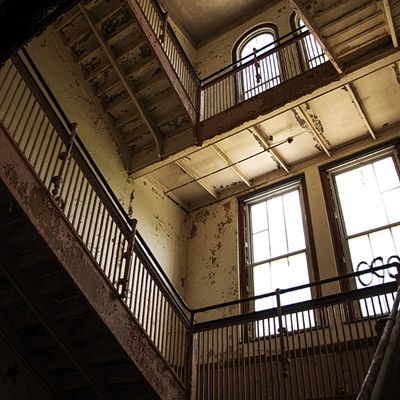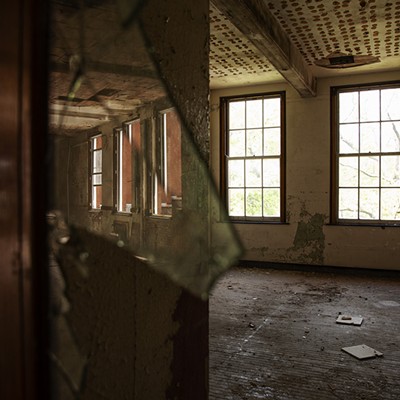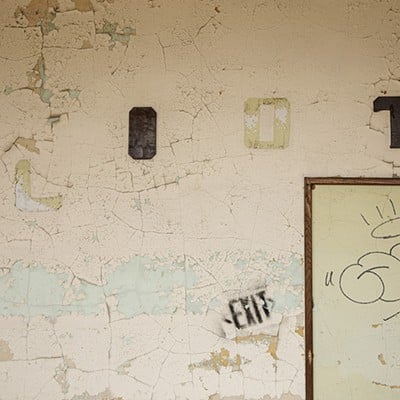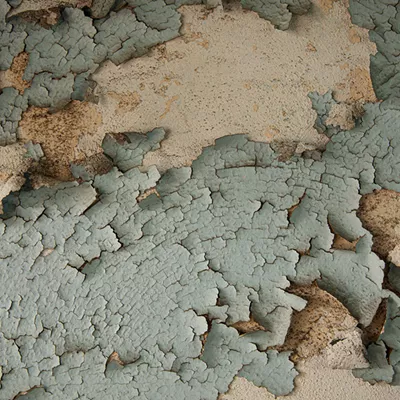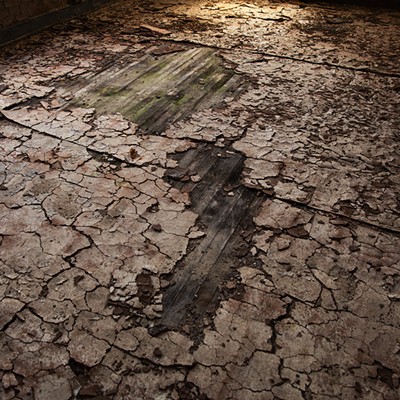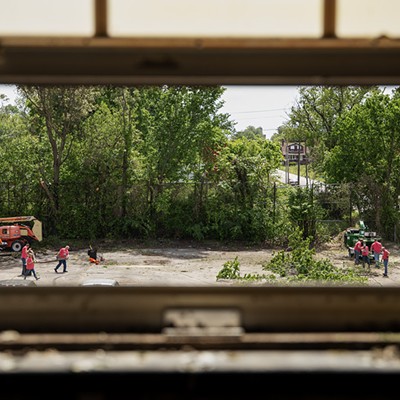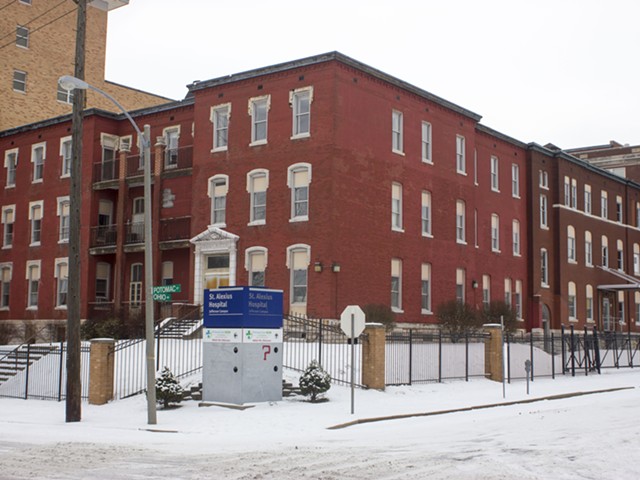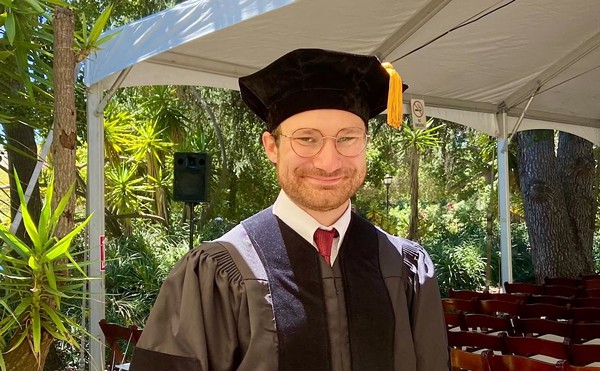On the border of the Fairground and Hyde Park neighborhoods, a mammoth has lain dormant for 20 years. Since its closure in 2004, the three-story, 51,380-square- foot Eliot School has not seen much life — but for the occasional wind or graffitist.
Opposite North Grand from the schoolhouse, Jubilee Community Church works tirelessly to bring community members back to life. They hope to do the same for the Eliot School, creating an anchor of hope for the neighborhood. In the largest private project north of Delmar in 75 years, Jubilee Community Development Corporation, a subset of Jubilee Community Church, has partnered with Trivers architecture firm to redevelop the Eliot School into the Jubilee Community Wellness Center. The center will provide recovery and support services to community members suffering from addiction, mental illness and homelessness.
“If we listened to every siren that would go by here during the day, I guarantee you’d hear 75 to 100,” Jubilee Administrative Pastor Andy Krumsieg reveals of North Grand. Krumsieg and his family have lived in north city since the 1990s. Both he and Dr. Bryan Moore, senior pastor at Jubilee, have witnessed addiction, mental illness and homelessness plague community members over the past 30 years. They ring an alarm bell for the fentanyl epidemic, which is particularly rampant up and down North Grand, and want to use the Eliot School as a space for community care.
Moore says the idea sprung from a dire necessity for treatment beds, saying there’s only 16 in the St. Louis area. “We just knew we had to do something.”
Currently, Jubilee operates a six-to-nine month rehabilitation program they call “Home.” Through a partnership with Assisted Recovery Centers of America, a behavioral health organization also known as ARCA that offers “a full continuum of integrated medical and behavioral treatment services to adult patients with substance use and other behavioral disorders,” the ministry has been able to provide more than 1,000 people with treatment. Home welcomes anyone in the community who has a substance abuse problem to come through its doors — whether simply to ask questions or to access long-term care. (Jubilee’s recovery housing is for men, but they are connected to women’s housing which they are able to refer women to.) Once people have recovered, Jubilee asks them to become stakeholders in the community, so that they may touch others facing addiction in the community and bring them into care. Moore calls it a “revolving circuit of healers.”
The structure of Home unites people on common ground. Addiction lasts a lifetime, requiring a support system willing and able to share strength through possible relapses. Jubilee fosters a growing network of people seeking care, who then support each other during and after healing.
“It’s called sober living. Not sober existing. In sober living, you need a community. You need a thing called ‘collective,’” Moore emphasizes. “They gather together because they need each other's strength, not just strength. They need somebody who is understanding, common ground about the struggle.”
He continues with a reminder: “Life is still happening all the time. One of the things about addiction is after you get the body under control, whatever made you an addict is still inside your brain, all of the trauma is still there, all of the drama is still there. So where you were able to get out of your mind, you can't anymore because this is sober. The problem is everything is sobering. Everything.”
The pastors mention 2:35 in the morning, when intrusive thoughts attack. Home gives those in recovery the skills to manage all of the things that will come against them after sobering up through continuous education and continuous care.
Krumsieg adds that the goal is to foster not independence or dependence, but interdependence. When the recovery program first began, they lost eight out of ten men who came through the door. Now, after years of gained knowledge, which Moore points out has been acquired at the better price of someone’s life, they keep eight out of ten. He says they take them from just surviving, to thriving, to reconnecting with their families and now, a brotherhood.
The only thing holding them back? Overcrowding.
Just over two years ago, Dr. Moore wrote a letter to the St. Louis Public School board, inquiring about the Eliot School. Dr. Kelvin Adams, then SLPS superintendent, personally attended a meeting to see firsthand the ministry’s vision. Moore says Dr. Adams was “a big help in the whole process,” adding, “the board came through for us.” In July 2022, Jubilee closed on the school's purchase.
The pastors knew they needed help from the best to tackle the monumental project. In a leap of faith, they contacted Trivers architecture firm, known for their stupendous pedigree of projects across the city. Dr. Moore remembers the day an “angel,” in the form of Joel Fuoss, principal at Trivers, came walking through the door.
Since the partnership’s inception, the Trivers team has sat down with both patients and community members to truly understand their needs in an expansion.
“We like to be part of catalytic projects and mission-driven work,” Fuoss says. “It's just a part of the DNA of who we are and what we want to do. We've always felt that St. Louis has so much to offer. And whatever little bit we can do to help further that along is something that we feel is a part of what our firm does.”
Trivers has completed hundreds of large-scale projects, ranging from the museum at the Gateway Arch to the restoration of Tower Grove Park pavilions. Fuoss believes the Jubilee Community Wellness Center fulfills their mission “perhaps more so than any other project that we’ve been a part of.”
He speaks to the project’s clear vision, concrete model and momentum. It simply needs room to grow.
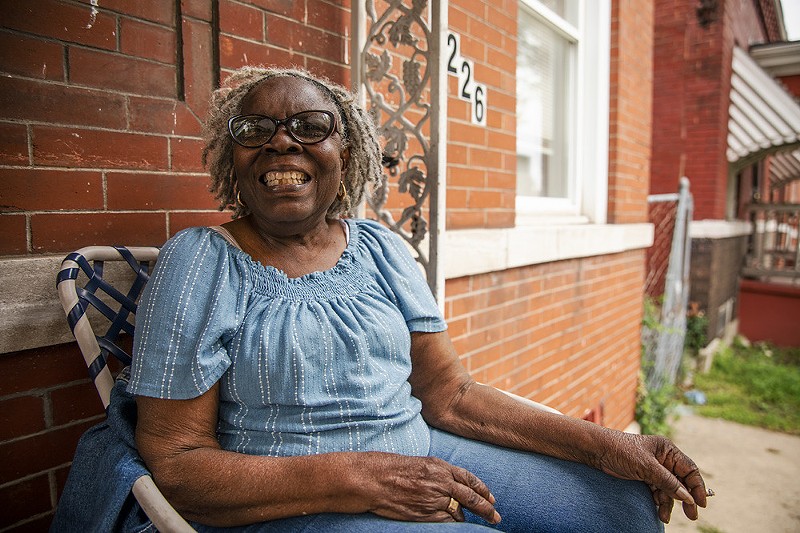
A project of this size requires a sizable amount of funding: over $23 million. The team has turned to the Community Development Association to secure some of the funding for the project. In compliance with regulations from the U.S. Department of Housing and Urban Development, CDA administers federal funds for city development and economic justice projects. Jubilee hopes to supplement city funds with historic and new market tax credits, as well as a capital fundraising campaign. The city has allocated $2.7 million so far, but Jubilee has applied for additional city funds, hoping to secure $5-7 million total.
Obtaining the money hasn’t been easy. Says Krumsieg, “The labyrinth of protocol and regulations that need to happen are virtually impossible.” After over a year of jumping through hoops to account for each requirement and request from CDA, ready with plans and necessary investors, the project’s financial status lies in a stalemate of back-and-forth emails.
Moore expresses his frustration. “Limbo. That's where we are. They come with a request, we fulfill that request. And then another request comes, and then another. Each time we thought we've reached the point where, OK, this is final, we've done everything, except for told them how many times we flush the toilet, we've done everything, all of a sudden, here comes something else.”
Fuoss agrees. “I think that's probably the most frustrating, is that you hear a lot of talk about revitalization on the north side …. And here you have a project that's ready to go. You've got everybody who's willing to jump in, a team that's ready and architectural heritage that’s being revitalized. What other boxes need to be checked?”
Emailed on Monday morning to ask for its perspective, CDA had not provided a statement by press time. We’ll update this story if we hear back.
Trivers, Jubilee, their real estate firm and their lawyers cannot understand why they have not been able to secure the additional funds from CDA.
Dr. Moore stresses, “the cost of it is literally people's lives… Every time that you delay us. We're losing lives here. Literally, losing lives.”
He mentions people that walk through their doors seeking help. They receive help from the ARCA clinic inside the church, but due to limited space, the church has had to send people back to the street.
“It has been heartbreaking to, seemingly so, keep moving the goalpost on us, while our motive is literally saving lives.”
In the meantime and in good faith, Trivers has begun work, filing for historic tax credits and finalizing blueprints.
The architectural heritage and history of the Eliot School cannot be overstated. Listed on the National Register of Historic Places, the schoolhouse marked the first school design by renowned St. Louis architect William B. Ittner. Ittner would go on to design more than 430 school buildings in Missouri. Aside from peeling paint, weathering and a colony of dust bunnies, the 1898 building boasts an incredibly sound structure, airy rooms with high ceilings and a facade of gorgeous paneled windows.
Across the street, neighbors Anita Monroe and Tim Ray relax on Ray’s front porch. Monroe, from Mississippi, moved to St. Louis as a child. She lived in the Pruitt–Igoe housing projects until the pipes froze, and from there moved around the northside, eventually landing in Fairground.
The two friends agree the wellness center is a good idea. Ray, however, feels skeptical about the location and safety, saying, “It would have been nice if Jubilee would have come by and asked the community about it.”
Monroe rebuts. “It’s gonna be alright,” she assures him. “Cause God says we’ll be alright. Everybody needs a little help every now and then.”
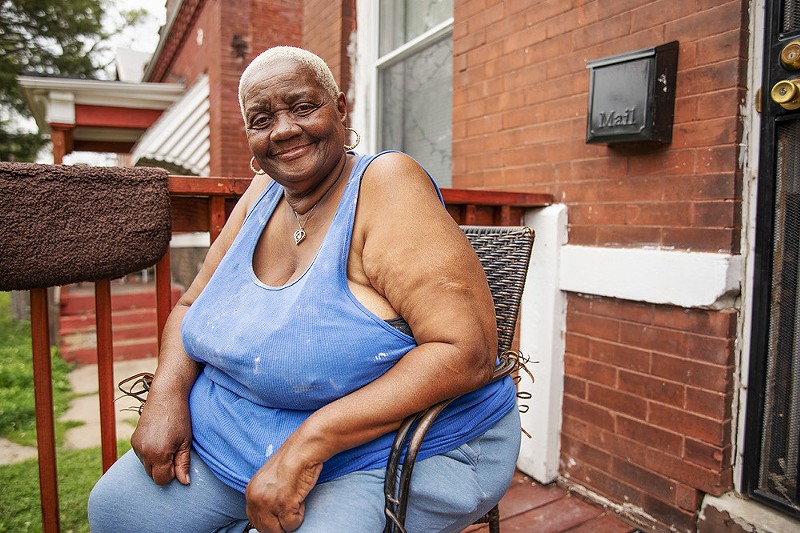
Two doors down, Diane, who’s lived across the street from the Eliot School for over 20 years, says she hadn’t heard about the upcoming plans, but it would be a great thing. “So many around here are on drugs, and so many need to heal.” She carries Narcan with her — a decision she made after she found a man who had overdosed in her alley. She does her best to help where she can, washing clothes, making peanut butter and jelly sandwiches, and providing baths for a few people who have knocked on her door. But she looks forward to a place that can provide showers, a place to change clothes and long-term treatment for people in need.
The completed development aims to address the fentanyl epidemic via multiple avenues. In-house will be a crisis clinic with out-patient and counseling services, as well as a dramatic increase from 16 to at least 75 beds in the new facility. ARCA support will expand into the new building, including an independently run on-site pharmacy and lab. Parts of the schoolhouse will transform into community and welcome spaces, as well as a commercial kitchen. There will also be space for training and fellowship.
Dr. Leslie Moore, executive assistant to the senior pastor, sheds light on yet another impact of the project. “As a woman, I am always thinking about safety.” She points out that having resources to help a person get back on their feet in one gargantuan and beautiful building will help anchor the neighborhood. “When you are safe and secure, then you can become a community.”
Fuoss echoes her point.“My vision for this is that that building is that first light that starts to radiate out.” He refers to its ability to transform both the people and buildings in the area. “I think a project of this consequence, and this special component that it is, has that power…because you have this group of people here that are committed and invested.”
Subscribe to Riverfront Times newsletters.
Follow us: Apple News | Google News | NewsBreak | Reddit | Instagram | Facebook | Twitter | Or sign up for our RSS Feed

